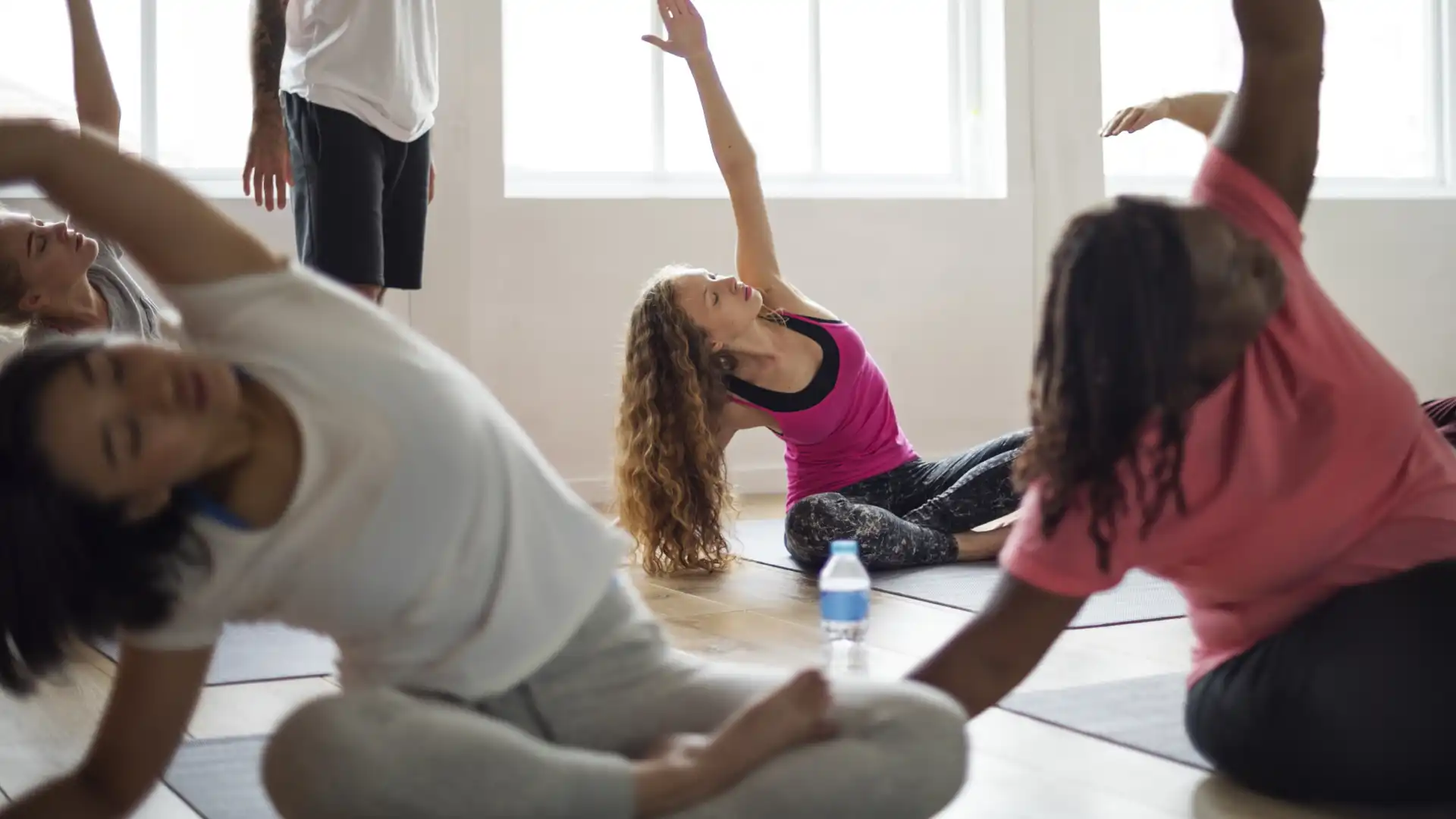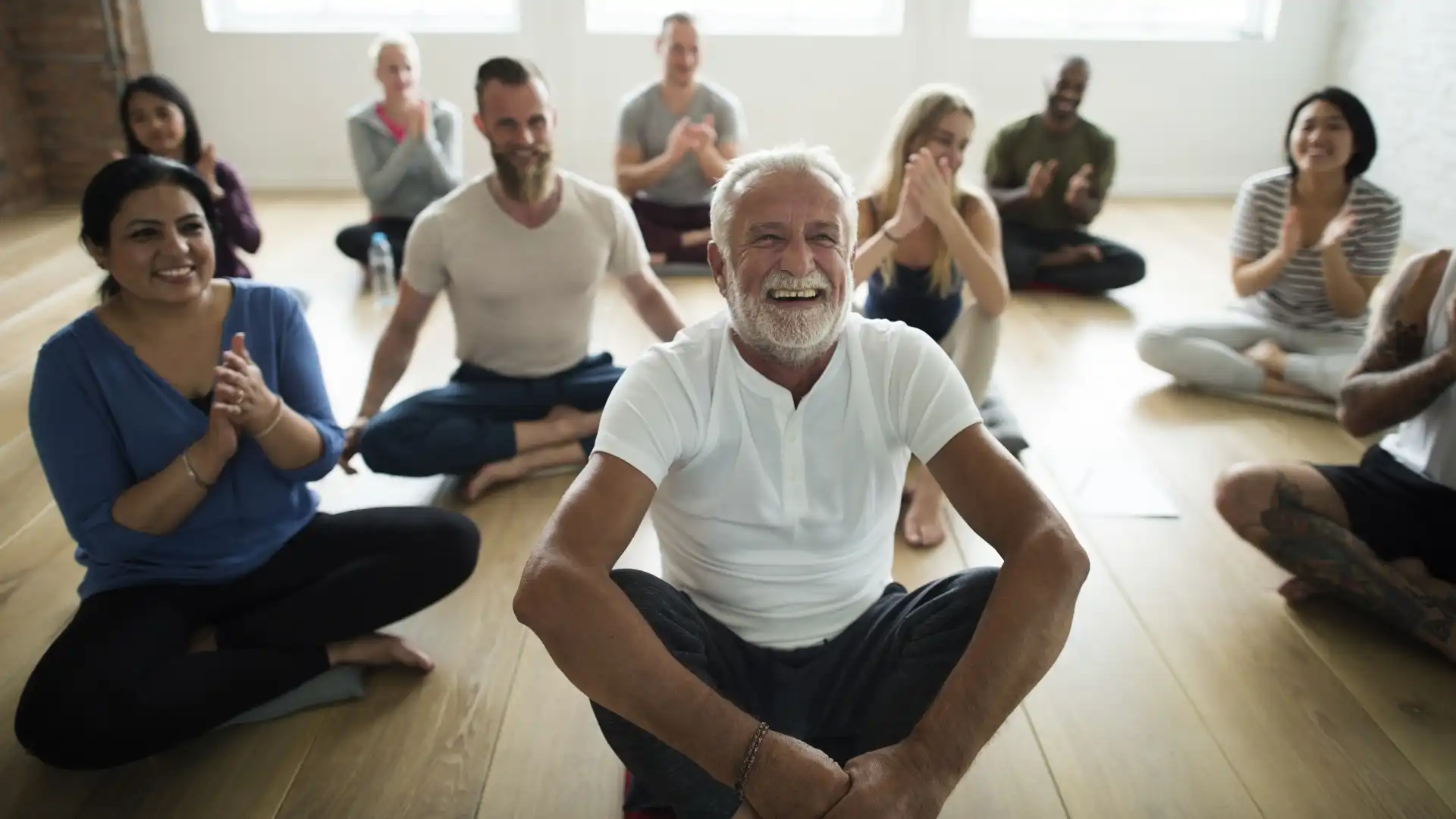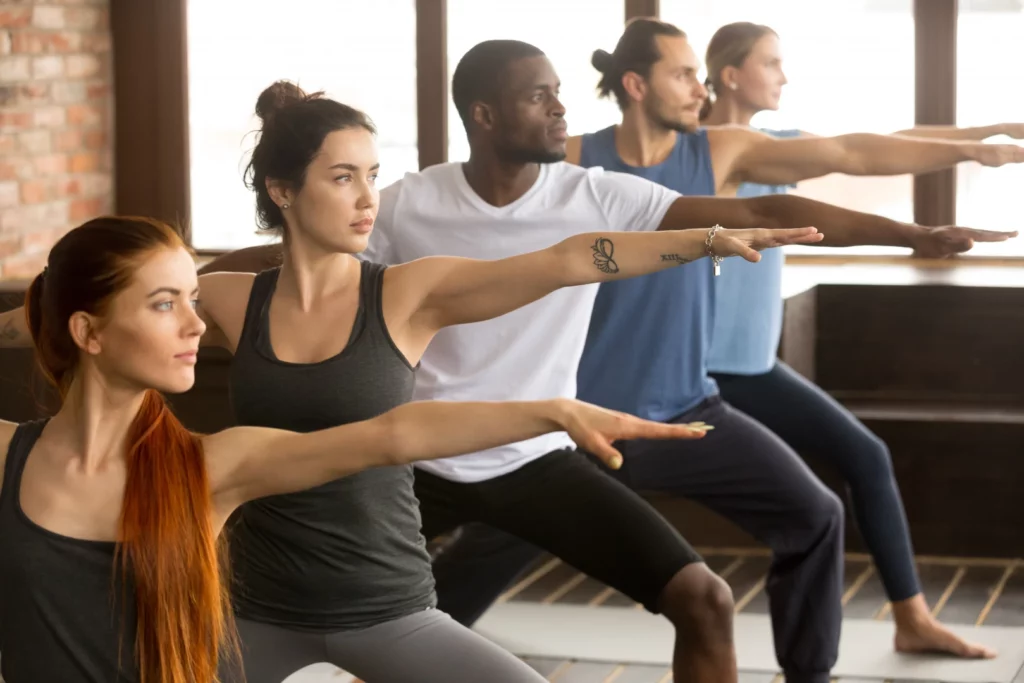6 Yogic Tips to Help Boost Immunity

The coronavirus has changed our lives, at least for the time being. People are understandably worried, and caution is justified. Grocery stores and pharmacies are the last bastions of in-person social interactions at the moment. And the internet has become an invaluable tool for connecting with friends and family.
We’ve all become familiar with smart practices to stem the spread of the disease. The practice of social distancing has halted concerts, sporting events, movies at theaters, working at the office, and going to the gym. Our homes have become a temporary refuge. Personal hygiene is front and center. According to the Centers for Disease Control (CDC), frequent hand washing could eliminate 50 to 60 percent of the risk.
Fortunately, there are additional yogic/Ayurvedic practices that can help as well. Even though we yoga and Ayurvedic practitioners don’t have a CDC microphone to get the word out, we can share these simple tips with our students.
By the way, I have no idea what evidence there is behind the effectiveness of these practices for preventing coronavirus, but I do know that they make me feel better and that, in and of itself, is a huge step toward prevention.
6 Yogic Tips to Help Boost Immunity
1. Gargle
When I lived in Tokyo, a crazily densely populated city, I noticed that most of my Japanese friends had a gargling habit. After being out and about, usually on public transportation, as soon as folks got home, they would gargle.
I remember my grandmother being a gargler, but somehow, it’s not as popular now in the States as it once was. So gargle when you get home. Adding ¼ teaspoon of salt and a teaspoon of apple cider vinegar to your warm water will certainly enhance your gargling experience.
2. Wash Out Your Eyes
Honestly, I have no idea if the coronavirus can enter through your eyes, but eye ducts drain into your nose, so cleaning your eyes can’t hurt. Splashing cool water into your eyes is a very relaxing practice. There is evidence that it activates the vagus nerve—the largest nerve of the parasympathetic part of the autonomic nervous system. It’s still unclear why it works, although some say it may activate the diving reflex, which helps mammals turn down physiologic processes in cold water to conserve energy.
Here’s how: At the sink, fill your cupped hands with cool water. Lower your face, and then splash quickly 1,2,3,4,5,6,7. Release the rest of the water, take a breath, and then do it again. And then a third time. Then splash a little cool water under your ears. Ah … refreshing!
3. Wash Out Your Nose
This one should be so obvious to health officials, but I feel like public health in the West has no idea that washing out the inside of your nose is a good idea. And while doing the whole neti pot thing (1/4 t. salt to 8 ounces body temp water) is terrific when you have time, you can also take a shortcut.
- After washing your eyes, stay there at the sink and put a little water in one hand. But it’s not advisable to use tap water. Instead, use purified boiled or distilled water.
- Gently sniff it up your nose, and then blow it back out your nose. Do it a few times till you clean out whatever’s in there. If you sniff too hard, it can sting, so be careful.
- After drying off, it’s great to use a little Nasya oil. Just a few drops on your finger, oil around the inside of your nose. The oil acts as a protective barrier against viruses and bacteria. If you don’t have any Nasya oil, coconut or pure untoasted sesame will do. They are both antiviral, antimicrobial, and antibacterial.
4. Lube Up!
And speaking of oil, it’s not just great for the inside of your nose. It’s also great for the rest of you. Put a few drops of sesame oil on your finger and then rub it around the inside of your ears and massage the bottoms of your feet. Very helpful for reducing Vata energy.
Winter is an excellent time for mustard oil, which can be helpful massaged onto the chest for coughs and, when inhaled (it has a strong aroma), is great for reducing congestion and killing critters.
Using a little oil for self-massage after a shower on the legs, arms, and torso, isn’t a bad idea either.
5. Trust (Shraddha)
So those are a few of the external practices to help you stay healthy in the face of virus mass hysteria. They are super easy to teach to your students as well.
But there are other important habits to cultivate as well—habits of mind. We can hand wash and gargle and clean our noses out till they’re spotless, but mental hygiene is equally important. Part of that includes, for me, not bombarding myself with the endless news cycle. It’s a surefire way to keep my stress response on red alert. Of course, I need to stay informed, but I don’t need to listen incessantly to the talking heads. There’s no sharknado lurking outside.
The yogic concept of shraddha, or trust/faith, has proven important to me over the years in getting through challenging times.

I trust that the smart scientists at the CDC are going to figure this out, as they have with so many other similar outbreaks in the past. I trust that I’m good at taking care of myself. I’m getting enough sleep, eating well, and making sure to practice daily. Ultimately, I trust that the universe is mostly a benevolent place.
Even if I do contract this virus, I trust that I have the physiologic, mental/emotional, and the external resources to overcome it. And if I do succumb to it, I trust that there is a larger plan and that my life and energy will be recycled in a useful way.
I also trust that if someone I know who is compromised contracts the virus, I can help ease their suffering in whatever way possible. And, although I prefer not to think about it, I trust that if they succumb to it, I can find the inner strength to go on and live my life with meaning and purpose.
6. Do Yoga

I think one of the most important things is to keep practicing. Don’t let fear paralyze the practice. That creates a negative feedback loop. No practice leads to more fear. More fear prevents practice. You can break that loop by taking 10-15 minutes to move slowly and breathe deeply. The health of the immune system is intimately connected to the health of the fascial matrix. So, keep the fascia hydrated and happy with slow, mindful movement. And a few minutes of meditation goes a long, long way.
So until this all dies down, make sure to take some time every day to give yourself a breather from all the news.
Also, read Melina Meza’s IMMUNE HEALTH TIPS: IMMUNE HEALTH: 6 YOGA & AYURVEDIC TIPS FOR NAVIGATING THE SEASONS.
Also, read...
The Fascia Connection: Tom Myers on How Postural Habits Get Locked into Our Fascial System
Nov 14 – Eva Norlyk Smith, Ph.D.
How to Start a Daily Gratitude Practice – 6 Useful Tips
Nov 04 – By: Stacy Slawitsky
Food Story: How to Eat Like a Yogi
Oct 25 – Lacey Gibson Ramirez MSc., RYT-500, ERYT-200, RPYT, CFSD
Related courses
Reprinted with permission from subtleyoga.com

 Committed to the widespread adoption of yoga as a population health strategy, Kristine Kaoverii Weber, MA, C-IAYT, eRYT500, YACEP has been studying yoga and holistic healing for nearly 30 years advocating, speaking, and teaching about yoga since 1995, and training educators since 2003. Her organization, Subtle® Health, LLC, provides holistic, mind-body training, education, and clinical services with the mission of enhancing community health infrastructure. She is the director of the Subtle® Yoga Teacher Training for Behavioral Health Professionals program at MAHEC in Asheville, NC, presents workshops and trainings internationally, and is frequently invited to speak about yoga at health care conferences. After completing her BA and MA at Georgetown University, Kristine trained extensively in many styles of yoga, including Viniyoga, as well as in Asian bodywork therapy and homeopathy.
Committed to the widespread adoption of yoga as a population health strategy, Kristine Kaoverii Weber, MA, C-IAYT, eRYT500, YACEP has been studying yoga and holistic healing for nearly 30 years advocating, speaking, and teaching about yoga since 1995, and training educators since 2003. Her organization, Subtle® Health, LLC, provides holistic, mind-body training, education, and clinical services with the mission of enhancing community health infrastructure. She is the director of the Subtle® Yoga Teacher Training for Behavioral Health Professionals program at MAHEC in Asheville, NC, presents workshops and trainings internationally, and is frequently invited to speak about yoga at health care conferences. After completing her BA and MA at Georgetown University, Kristine trained extensively in many styles of yoga, including Viniyoga, as well as in Asian bodywork therapy and homeopathy.
She is the author of The Complete Self Massage Workbook and has published articles in the International Association of Yoga Therapist’s journal, Yoga Therapy in Practice, and other wellness publications. Her work has been featured in Redbook, BodySense, Women’s World, Natural Health, and Lifetime TV.
Recent articles
In Celebration of Gray-Haired Yoga – Busting the Myth of the Yoga Body
Dec 12 – Charlotte Bell
4 Yoga Poses to Help Ease High Blood Pressure
Dec 08 – Stanley Clark
Categories
Upcoming courses
Reconnecting with Strength: Your Path to Building Greater Inner Resilience
With Arielle Schwartz
Recent articles
Almost there...
Sorry, we couldn't find anything...
Yoga Practice Tips
In Celebration of Gray-Haired Yoga – Busting the Myth of the Yoga Body
I found my first grey hair when I was 22. It wasn’t completely shocking.…
Dec 12 – Charlotte Bell
Yoga Practice Tips
Judith Hanson Lasater on The Art of Teaching Yoga: Making Every Movement an Asana
Judith Hanson Lasater is one of the longest-teaching yoga teachers in the U.S. In…
Dec 09 – By:
Blood Pressure
4 Yoga Poses to Help Ease High Blood Pressure
Approximately 46 percent of Americans have high blood pressure, based on the American Heart…
Dec 08 – Stanley Clark



